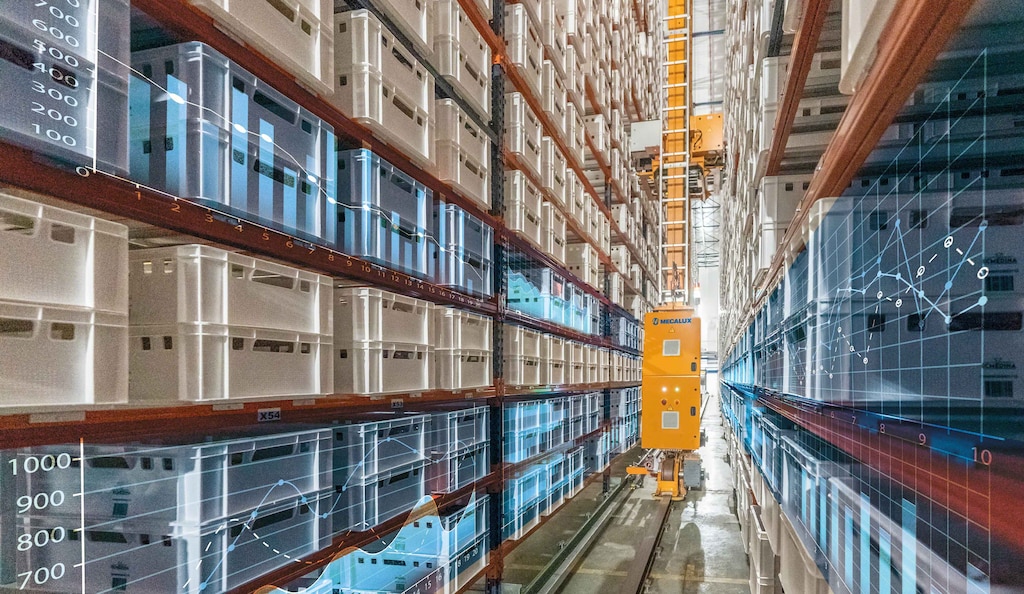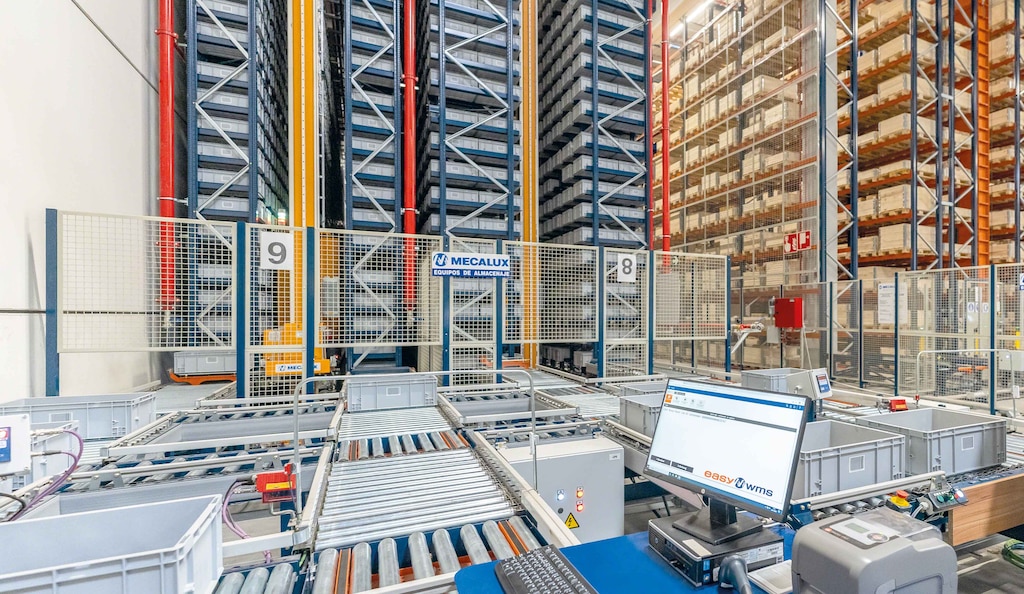BUSINESS FOCUS
Big data in the supply chain makes it possible to create innovative strategies that help organisations to boost their logistics operations. By analysing all the data generated in their warehouses, companies can detect opportunities for improvement and make strategic business decisions.

In the last five years, the number of internet-connected devices has mushroomed. A study from consulting firm International Data Corporation forecasts that in 2,025, there will be over 41 billion smart devices around the world. That same year, this set of devices is expected to produce a data volume of over 79.4 zettabytes.
The exponential growth of the number of data generated with big data presents a singular opportunity for improving processes and decision-making in organisations. Technology consulting firm Gartner says: “Big data are high-volume, high-velocity, and/or high-variety information assets that demand cost-effective, innovative forms of information processing that enable enhanced insight, decision-making, and process automation.”
Big data analytics facilitates the extraction of useful information from large data sets. To segment and transform data, a wide range of big data technologies have recently emerged, including Cassandra, Integrate and MongoDB. These systems collect and manage a huge volume of information that would be impossible to analyse with traditional programs.
Today, big data is applied in all types of companies and fields, from production units to maximise throughput, to marketing departments to segment the market and obtain optimal results.
Why is big data so important for businesses?
With big data analytics, companies can control and process the copious amount of data produced within their organisations to identify new opportunities.
According to the study Big data analytics capabilities and knowledge management: impact on firm performance from Italy’s University of Turin, “big data analytics (BDA) guarantees that data may be analysed and categorised into useful information for businesses and transformed into big-data-related knowledge and efficient decision-making processes, thereby improving performance.”
It is precisely in decision-making where big data is making a difference for companies. A multidisciplinary research paper from the University of New Mexico’s Anderson School of Management and South China Agricultural University’s College of Economics and Management highlights the strategic role of big data in business: “The empirical results showed that big data analytics usage had a positive impact on decision-making quality.” The authors of the study, published in the academic journal Technological Forecasting and Social Change, see the potential of big data analytics for improving business competitiveness. “Firms should not only popularize big data analytics usage in their business activities but also take measures to improve their data analytics capabilities, which will improve their decision-making quality toward competitive advantages.”
Big data in the supply chain
Big data opens up a vast wealth of opportunities for supply chain leaders. An Ernest & Young report shows that 61% of executives surveyed plan to adopt big data analytics in the next three years, while 33% are currently running pilot programmes or have implemented big data analytics tools in some areas of their supply chains.
Big data analytics can also provide benefits in product manufacturing, storage, transport and distribution. In the research article Big data analytics in supply chain management, scholars from Western Illinois University say: “BDA in SCM [supply chain management] provides many benefits as well as poses challenges for organizations. For example, BDA can help better predict demand/supply, analyze the change of customer preferences, improve supply chain visibility, and enhance supply chain resilience.”
With big data tools, analytics methods are implemented to promote informed decision-making in the supply chain. “Big data analytics (BDA) has emerged as a means of arriving at more precise predictions that better reflect customer needs, facilitate assessment of SC performance, improve the efficiency of SC, reduce reaction time, and support SC risk assessment,” say researchers from Canada’s Concordia Institute for Information Systems Engineering.
Supply Chain Analytics: big data applied to the warehouse
Logistics digitisation promotes the use of internet-connected devices that generate countless data. To facilitate their analysis and interpretation, Mecalux has developed Supply Chain Analytics Software. This advanced functionality of the Easy WMS warehouse management software program segments and structures data originating from any facility.
By transforming the enormous quantity of warehouse data into useful information, logistics managers can make decisions more easily and more accurately. Supply Chain Analytics Software classifies the data, converting them into key performance indicators (KPIs). These give managers a real-time snapshot of the status of operations as well as a historical analysis of the facility’s throughput.
The software incorporates dashboards and graphics with basic information on the warehouse, such as the percentage of SKUs in stock and order lines prepared. The program also creates customisable KPIs in line with the requirements of each logistics manager.

Supply Chain Analytics Software fosters flexible, productive logistics processes adapted to business needs. For example, Intermark, a packaging and labelling materials company, equipped its warehouse with Mecalux’s advanced analytics module to comprehensively monitor its logistics operations. “The module shows how our processes are being carried out and helps us to make strategic improvements based on the performance of our daily operations. Our market is very dynamic, and customer requirements change quickly. As a result, we have to transform our business to be able to meet these new needs. With this module, we now have data-driven information to introduce changes that help us fine-tune our logistics operations,” says Juan Pablo Calvo, General Manager at Intermark.
Big data analytics also equips organisations with reliable, objective data that enable them to modify and optimise processes. “Easy WMS fits the particular characteristics of our business like a glove. With this system, we know the availability of the SKUs and can take inventory in real time,” says James Hansen, Executive Vice President at Yamazen USA. The machine-tools distributor uses the Supply Chain Analytics Software module to consult and analyse the throughput of its warehouse operations.
Mecalux has implemented the Supply Chain Analytics Software module in logistics facilities around the world for organisations in multiple sectors. With this technology, companies apply big data to their warehouses to control everything happening in their supply chains.
Logistics: driven by the power of data
Although big data analytics is extremely useful in all industries, in the logistics sector, it is vital. The massive quantity of data generated in warehouses has considerable potential for strategic decision-making.
Companies rely on technology to interpret the tremendous amount of data produced every day in different business areas. Big data analytics opens the door to new improvement opportunities, such as optimising logistics operations, planning future investments, and launching new products or projects.
Big data: a revolution on the rise
In 1997, NASA researchers Michael Cox and David Ellsworth introduced the concept of big data in the article Application-controlled demand paging for out-of-core visualization. “Visualization provides an interesting challenge for computer systems: data sets are generally quite large, taxing the capacities of main memory, local disk, and even remote disk. We call this the problem of big data.”
At the start of the new millennium, the democratisation of the internet began to open up unique data collection and analysis opportunities. The expansion of online sales portals made it easier for companies like eBay and Amazon to focus on analysing customer behaviour to increase turnover. Subsequently, the social media boom intensified the need for tools to organise the inordinate amount of unstructured data originating from the networks. Nevertheless, with the arrival of the Internet of Things (IoT) and machine learning, the use of internet-connected devices has skyrocketed, greatly expanding the possibilities of big data.
Big data analytics tools already have a solid track record behind them. But the emergence of new technologies such as cloud computing opens up new ways to exploit the potential of data analytics and optimise business performance.
The 5Vs of big data
Big data is characterised by five dimensions, known as the 5Vs:
- Volume: the huge amount of information from multiple sources has to be managed with new advanced forms of data administration, exploitation and storage.
- Velocity: the massive and constant flow of data moves at a dizzying pace. And this requires agile collection and processing tools to prevent the information being collected and analysed from becoming obsolete.
- Variety: big data analytics tools have to process written sources in addition to images, computer data, audio, videos and all kinds of content on social networks and new platforms.
- Veracity: with big data analytics, it is necessary to select truthful data for further analysis and discard irrelevant information.
- Value: if the data complied have been properly selected and analysed, the information obtained will be of great value to the organisation.
